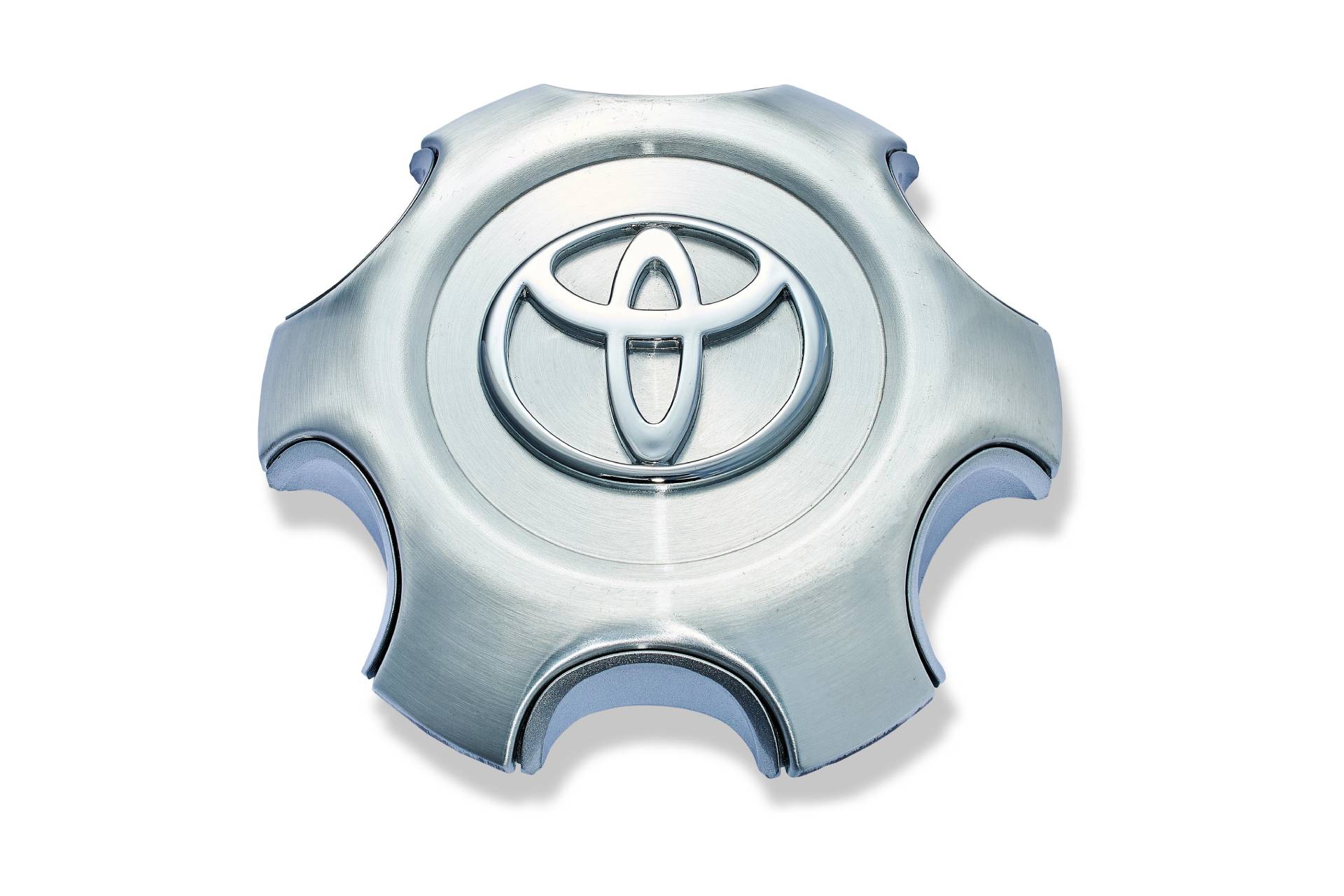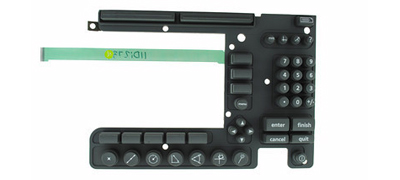10 innovative uses of Rubber Keypads beyond home devices
Discovering the Production Process Behind Rubber Keypads and Their Importance in Modern Gadgets
Rubber keypads are pivotal in the functionality of modern devices. Their production procedure includes careful selection of materials and accurate strategies. Keypads are created to improve individual interaction while ensuring durability and reliability. Comprehending how these elements are made reveals their value across various applications. What elements contribute to their efficiency, and how do these aspects affect customer experience? The responses may reshape understandings of this everyday innovation.
Overview of Rubber Keypads and Their Applications

Rubber keypads are flexible components extensively utilized in numerous electronic devices, ranging from customer electronic devices to industrial equipment. Their style enables a responsive feedback, making them a perfect option for applications needing individual communication. Frequently located in items such as remotes, calculators, and clinical tools, rubber keypads facilitate simplicity of use and access.
In commercial settings, they serve vital functions in equipment and control panels, where sturdiness and resistance to ecological aspects are essential. The non-slip surface improves grasp, promoting reliability in requiring conditions. In addition, their light-weight nature and customizable shapes make it possible for makers to develop customized solutions that fit particular needs. With improvements in technology, rubber keypads continue to evolve, including features like backlighting and improved level of sensitivity. On the whole, their flexibility and functional benefits contribute considerably to the efficiency of various gadgets throughout multiple industries.
Products Utilized in Rubber Keypad Production
Keypad producing depends on a choice of products that boost both performance and toughness. The main product utilized in the production of rubber keypads is silicone rubber, recognized for its superb resilience and versatility. This product enables keypads to withstand duplicated pressing without losing shape or performance. Additionally, thermoplastic elastomers (TPE) are frequently made use of due to their convenience of molding and capability to supply a soft-touch feeling.
Coloring representatives, such as pigments, are incorporated to guarantee lively, resilient hues that boost visual allure. Furthermore, additives like anti-UV representatives and flame resistants may be mixed right into the rubber to enhance weather condition resistance and safety and security compliance. The choice of materials directly influences the keypad's tactile action, long life, and overall efficiency in various gadgets. Eventually, the careful option of these parts is important for the production of high-quality rubber keypads that meet customer and industry demands.
The Design Process of Rubber Keypads
When developing rubber keypads, the design procedure plays a crucial duty in identifying performance and customer experience. Designers begin by defining the keypad's meant usage, thinking about aspects such as the gadget it will certainly accompany and the target individual demographic. This first phase consists of mapping out designs that prioritize ergonomic facets, ensuring the secrets are easily accessible and suitably spaced.
Next off, designers focus on the responsive comments wanted from the keypads, which influences the option of products and vital shapes. Prototyping is essential in this phase, enabling designers to examine different styles for comfort and responsiveness.

Manufacturing Techniques for Rubber Keypads
The manufacturing process for rubber keypads involves a series of accurate strategies that assure top quality and functionality. Fluid silicone rubber (LSR) is usually utilized due to its resilience and flexibility. The procedure begins with blending the raw materials, consisting of silicone, colorants, and healing agents. This combination is then injected right into molds made to shape the keypads properly.
Adhering to shot, the molded keypads undergo treating, a home heating procedure that strengthens the product (Rubber Keypads). This is normally carried out in a press, ensuring the keypads achieve the desired firmness and strength
Quality Assurance Procedures in Production
To guarantee that rubber keypads meet high criteria of top quality and functionality, strenuous high quality control measures are applied throughout the manufacturing process. These procedures begin with basic material assessment, making certain that only the highest-grade elastomers are made use of. Throughout the manufacturing phase, operators conduct routine checks to keep track of parameters such as temperature level, stress, and mixing times, vital for achieving regular item quality.
Post-production, each batch of keypads undertakes extensive screening, consisting of responsive feedback evaluations and durability tests to examine performance under various conditions. Visual examinations are likewise performed to determine any type of flaws, such as bubbles or disparities in texture. Additionally, conformity with industry criteria is validated, ensuring that the keypads fulfill safety and security and performance criteria.
The Role of Technology in Keypad Development
Modern technology plays a necessary function in the look these up advancement of rubber keypads by allowing advanced manufacturing strategies that boost accuracy and effectiveness. In addition, innovative product choice enables improved durability and responsiveness in keypad performance. These developments not only simplify production however likewise raise the total top quality of the last item.
Advanced Production Techniques
Improvements in production techniques revolutionize the production of rubber keypads, boosting both effectiveness and accuracy. Technologies such as shot molding and 3D printing have actually changed typical processes, making it possible for suppliers to produce complex layouts with lowered waste great site and enhanced turn-around times. Automation plays a crucial function in this evolution, enhancing production line and minimizing human error. In addition, computer-aided design (CAD) software program permits complex personalization, guaranteeing that keypads meet specific customer needs. Quality assurance measures have likewise progressed, incorporating real-time monitoring systems that identify defects early in the production cycle. These technologies not only enhance the durability and functionality of rubber keypads however also support the growing demand for tailored solutions in numerous industries, from consumer electronic devices to auto applications.
Innovative Product Selection
The advancement of producing strategies has actually paved the method for cutting-edge product selection in rubber keypad development. Advancements in polymer science have introduced materials that enhance longevity, versatility, and responsive responses. Manufacturers currently use polycarbonate elastomers (TPE) and silicone substances, which give superior resistance to wear and ecological elements. These products permit for the production of keypads that can endure prolonged use while preserving visual charm. In addition, the assimilation of additives and coverings boosts functionality, such as improving grip and minimizing rubbing. The option of products is crucial, as it directly influences the performance and longevity of keypads in various tools, from customer electronic devices to industrial equipment. This ingenious approach remains to shape the future of keypad style and usability.
The Influence of Rubber Keypads on Individual Experience
Rubber keypads considerably influence individual experience with their boosted responsive action, which permits for even more specific interaction. Furthermore, their sturdiness and longevity contribute to constant performance gradually, minimizing the requirement for constant replacements. This mix of functions makes rubber keypads a recommended selection in numerous applications, eventually influencing individual complete satisfaction.
Enhanced Tactile Feedback
Enhancing responsive reaction considerably influences individual experience, specifically in gadgets that rely upon keypads for interaction. Rubber keypads offer a distinct mix of soft qualities and durability, permitting users to really feel unique feedback with each press. This feedback strengthens a sense of control and accuracy, critical in applications ranging from smartphones to industrial tools. Users typically report higher complete satisfaction and effectiveness when engaging with devices that feature properly designed rubber keypads, as they facilitate quicker and a lot more precise input. Additionally, the ergonomic layout of these keypads can reduce finger fatigue, advertising longer use durations without pain. On the whole, the improved responsive feedback provided by rubber keypads considerably adds to a much more instinctive and enjoyable user experience in contemporary technology.
Toughness and Longevity
A crucial aspect of customer experience with rubber keypads depends on their sturdiness and long life. These keypads are designed to stand up to comprehensive usage, withstanding damage that usually impacts other products. The durable nature of rubber assurances that keypads maintain their performance and appearance with time, Bonuses which is important for gadgets frequently made use of in numerous environments. Users gain from the reliability of rubber keypads, as they can endure exposure to temperature, dust, and moisture variations without degrading. This resilience not only boosts customer contentment however likewise reduces the need for frequent replacements, eventually contributing to cost-effectiveness for producers. Essentially, the toughness of rubber keypads substantially affects the overall performance and user experience in contemporary devices.
Often Asked Questions
How Long Do Rubber Keypads Usually Last in Devices?
Rubber keypads usually last in between 5 to 10 years, depending on use, environmental variables, and high quality of materials used (Rubber Keypads). Normal damage can shorten their life-span, affecting performance and user experience in time
Can Rubber Keypads Be Custom-made for Particular Applications?
Rubber keypads can certainly be personalized for certain applications, enabling changes in size, color, form, and structure. This versatility makes it possible for makers to produce customized remedies that meet varied individual needs and improve functionality in different devices.
Are Rubber Keypads Environmentally Friendly?
Rubber keypads are often ruled out eco-friendly due to their petroleum-based products. Innovations in sustainable production practices and the growth of bio-based alternatives are slowly boosting their environmental influence in different applications.
What Are Common Issues Encountered During Rubber Keypad Manufacturing?
Typical issues faced during rubber keypad production include inconsistent worldly top quality, mold issues, improper healing times, attachment failures, and challenges in accomplishing accurate tactile responses. These problems can lead to decreased item performance and customer dissatisfaction.
How Do Rubber Keypads Compare to Various Other Kinds Of Secret Switches?
Rubber keypads use a softer feeling and quieter operation contrasted to mechanical switches, which offer responsive comments. However, rubber keypads may wear faster and do not have the precision that some customers prefer in high-performance applications.
The main product utilized in the manufacturing of rubber keypads is silicone rubber, recognized for its excellent resilience and flexibility. When producing rubber keypads, the design process plays a crucial function in determining capability and customer experience. Rubber keypads greatly influence user experience via their improved tactile reaction, which permits for even more exact interaction. Users frequently report higher complete satisfaction and effectiveness when interacting with tools that feature properly designed rubber keypads, as they help with quicker and more exact input. An essential element of individual experience with rubber keypads exists in their toughness and long life.